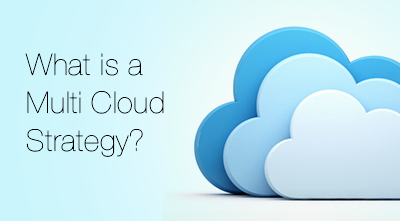What is a Multi-Cloud Strategy?
Multi-cloud strategy is the simultaneous use of multiple cloud service to minimize the threat of extensive data loss or downtime due to component failure in cloud.

A multicloud strategy is essentially what it sounds like – the use of two or more cloud systems to ensure maximum uptime for websites, complete availability of resources, better defense against outages and cyberattacks, and more. In this sort of setup, one type of cloud might be used for specific requests, and another cloud would handle other requests. Alternatively, it could involve the use of the public cloud for some resources and a private cloud for other resources.
Why Does a Multicloud Strategy Matter?
When it comes to cloud technology, uptime and availability are both huge factors. Both can be affected by seemingly inconsequential things – a single failed hard drive within the host data center can result in widespread cloud outages. A single failed connector cable can cause the same problem. On the other hand, cyberattacks and even natural disasters can also affect cloud availability and uptime. In order to ensure that your business has the best uptime possible, and to guarantee that resources are always available to those who need them, a multicloud strategy can be adopted.
Think about it this way – with the traditional cloud setup, you are tied to a single vendor for all of your needs. Ordinarily, that is not a problem. However, if an issue arises that causes an outage with the cloud provider, your business grinds to a halt. When you partner with more than one vendor, you’re not putting all your eggs in one basket, and you can virtually guarantee 100% uptime no matter what sort of disaster or accident has happened.
What other benefits might your organization gain through a multicloud approach?
One benefit could be the ability to split workloads between different cloud services. For instance, if one service performed best with high-speed but small size requests, and another performed better with low-speed, large size requests, you could split the load between the two and deliver a better experience for users.
Another benefit is the ability to optimize costs. By using more than one cloud provider, you can pick and choose what services you use from each provider and achieve lower overall costs.
Of course, there’s also the fact that you can mitigate risks and improve security across the board. For example, you can choose to have a private cloud located on your business property to hold sensitive consumer financial information, or medical records (both of which are protected by government and industry regulations), and the rest of your business could utilize a public cloud. While technically a hybrid cloud setup, this does fall under the multicloud strategy heading, as there are at least two separate clouds being utilized.
In the end, a multicloud strategy is really all about gaining better control over your cloud services. With two or more vendors, you’re not locked into a relationship with any single vendor, you have greater scalability, you can optimize for costs, and you can ensure maximum uptime and availability across the board.